History and Architecture of the Church of the Third Order of St Francis
An outstanding example of Baroque architecture in Brazil, the Church of the Third Order of Saint Francis, located in Largo do Pelourinho, in Salvador, Bahia, had its foundation stone laid on 1 January 1702.
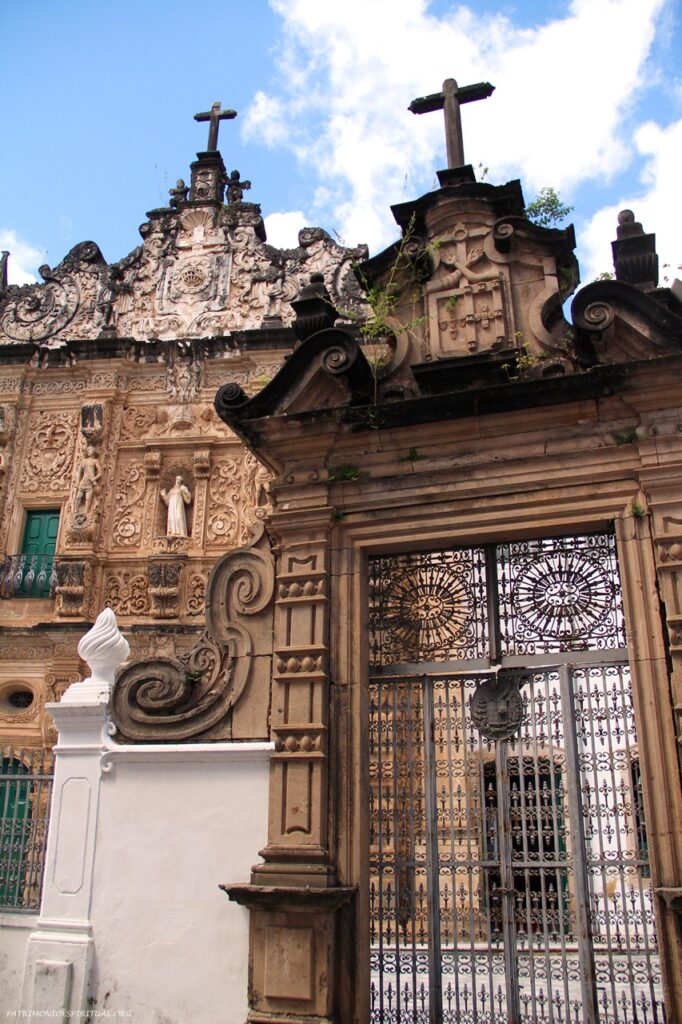
Video – History and architecture of the Church of the Third Order of St Francis
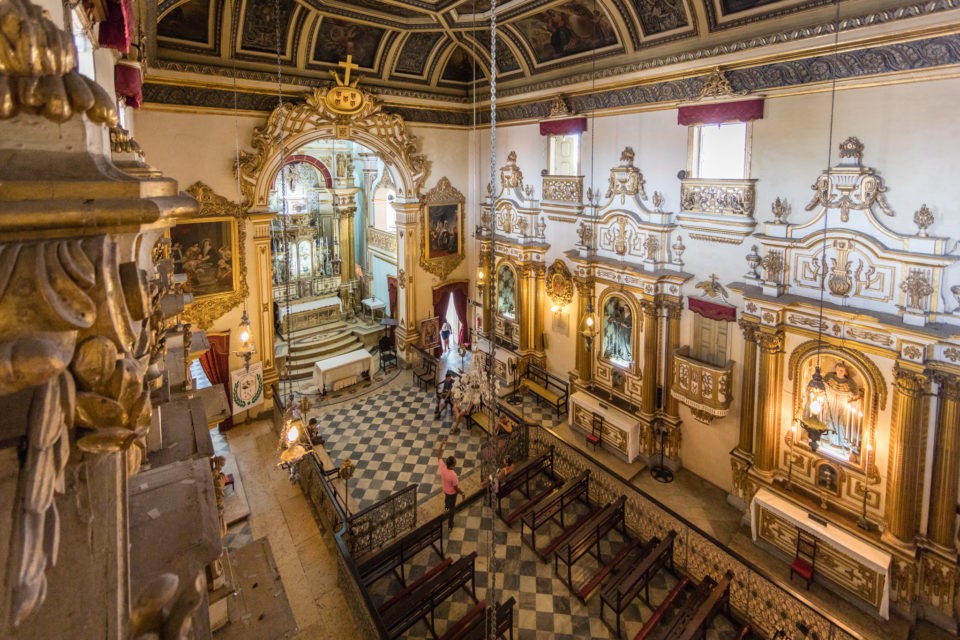

Igreja da Ordem Terceira de São Francisco em Salvador09:56

Conheça a Igreja de São Francisco em Salvador BA04:38
See also the details of the façade of the church – ICONOGRAPHY OF THE FAÇADE OF THE CHURCH OF THE THIRD ORDER OF SAINT FRANCISCO IN SALVADOR, BAHIA.
Façade and interior
The exuberant high-relief façade, carved in limestone with sandstone cornerstones, has an image of St Francis carved in marble in its central niche.
The original baroque interior was replaced by neoclassical altars between 1827 and 1828.
The Portuguese tiles, however, have largely survived and are distributed throughout the cloister, consistory, aisles and galleries of the church. These show scenes of Lisbon before the earthquake that destroyed the city in 1755, and of the wedding procession of Dom José and Dona Maria Ana de Bourbon.
The church also houses important works of religious art, such as the sculpture of the Dead Lord weeping ruby tears, by Francisco das Chagas Xavier, and a Hall of Saints with life-size images of the Saints.
The interior of the Church of St Francis, built in the 18th century, is covered in gold and rosewood with carvings of angels, animals and flowers.
There are numerous tile panels in shades of blue at the entrance to the church, on the altar and in the sacristy, depicting scenes alluding to St Francis of Assisi – his birth and his renunciation of material possessions, works by Bartolomeu Antunes de Jesus, one of the great Portuguese tile masters.
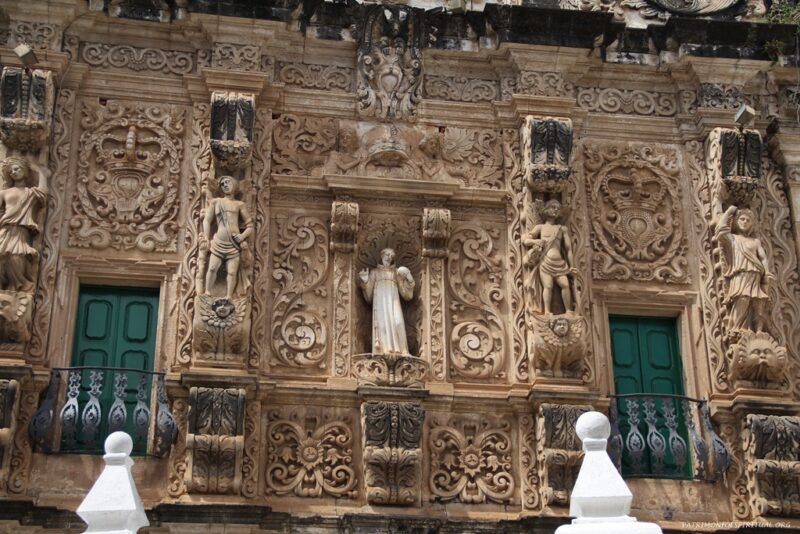

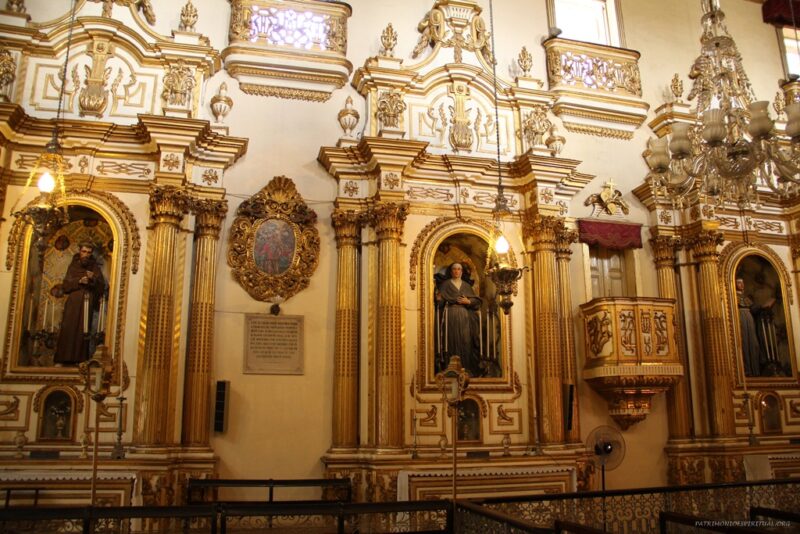
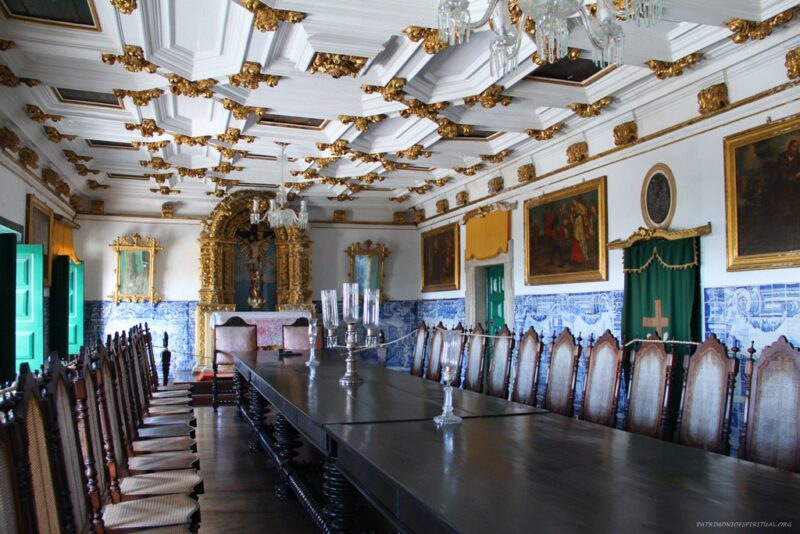

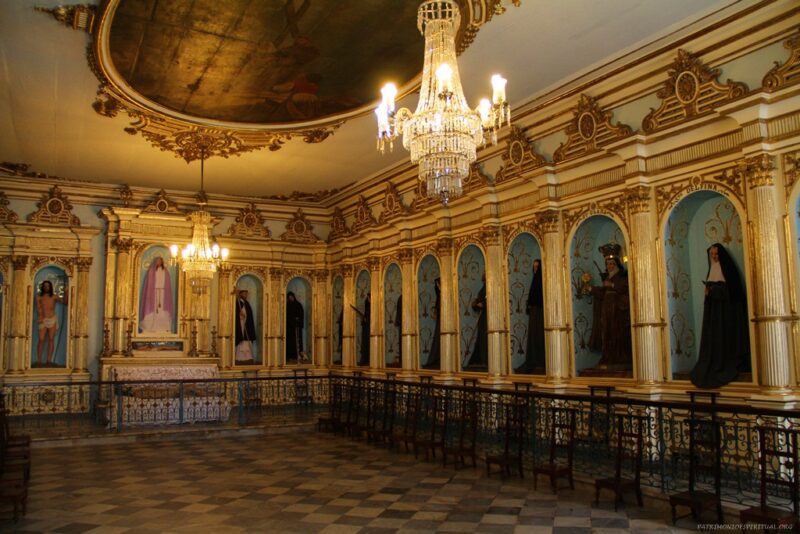

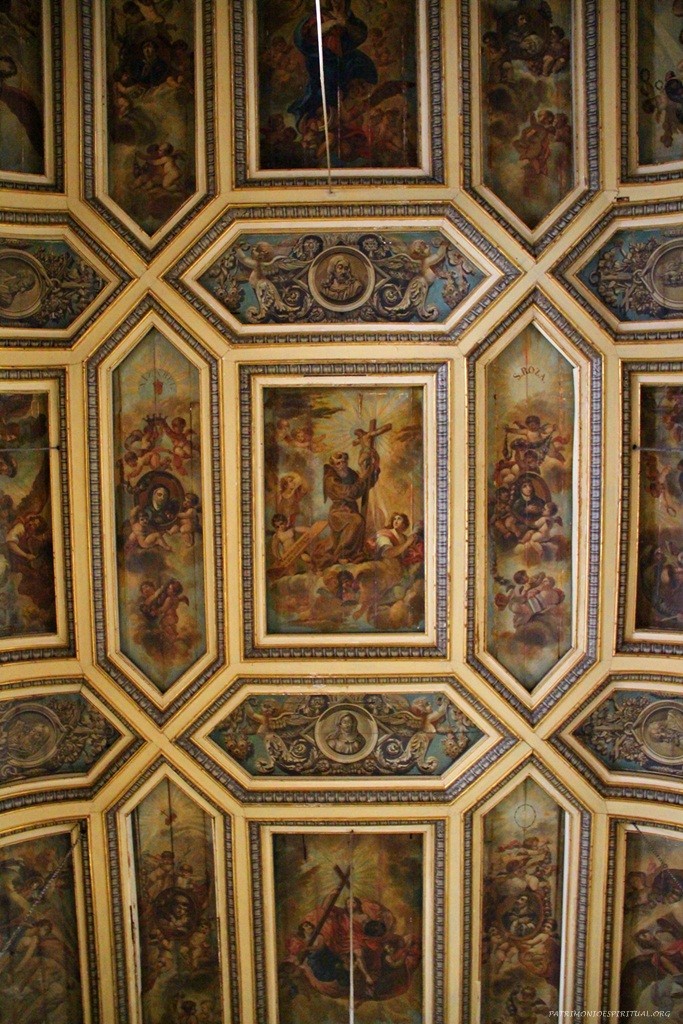
Origin and construction
Its origins date back to 1686, following a project by Father Vicente das Chagas. The convent was begun first, and in 1708 the foundation stone of the church was laid, and the building was completed in 1723, but its decoration took even longer. The convent was completed in 1752, but the whole complex wasn’t finished until 1782, when the tiles were laid and the gatehouse finished.
In the 20th century the buildings underwent several restorations. The plan of the church is unusual among Franciscan buildings in the northeast of Brazil, as it has three naves, whereas the more common design has only one nave.
The façade, which faces a large square where there is a cross, has a Mannerist influence, with two relatively simple side towers and a more decorated central volume, especially in the pediment.
Interiors and decoration
All the interior surfaces – walls, columns, ceiling, chapels – are covered with intricate carving and gilding, with florets, friezes, arches, volutes and countless figures of angels and birds scattered throughout, as well as panels of Portuguese tiles with various moral scenes and inscriptions.
It is considered one of the most important expressions of Baroque in Brazil.
The ceiling contains paintings by Friar Jerônimo da Graça, made between 1733 and 1737. The Sacristy, one of the most beautiful examples of Brazilian Baroque architecture, is richly carved and marbled.
The church and its historical context
The Convent of São Francisco and the Third Order, in São Salvador da Baía de Todos os Santos, is considered one of the most important examples of Baroque art in Brazil. A World Heritage Site, its foundation dates back to the early days of Portuguese colonisation.
Founded in 1549, the city was christened São Salvador da Baía and a fortress was built to protect its citizens. A hundred years later, the Third Order of St Francis of the Bay was founded, whose friars were first housed in a small chapel before moving on to build the monastery in 1587.
The church is decorated with a treasure: more than 1,500 square metres of tiles depicting the city of Lisbon before the 1755 earthquake.
The façade of the church is made of sandstone imported from Portugal but carved in Brazil. The Third Order of St Francis was founded in Salvador in 1635, next to the convent of the same name, and its first chapel was completed in 1644.
In 1686 plans were made to build a larger church, and about fifteen years later a competition was held to select the artists who would do the work.
Once the selection had been made, work began on the new church in 1702, which would stand out from the rest for its façade, entirely carved out of sandstone in the so-called Plateresque style, which was widely used in churches in Hispanic America.
It is a unique example in Brazil, and only the church of Nossa Senhora da Guia in Paraíba can be compared to it, though with more simplicity.
The interior of the church was almost completely redesigned in the 19th century by the carver José de Cerqueira Torres, with a predominance of the neoclassical style. In 1844, under the direction of Joaquim Francisco de Mattos, a chapel called the Casa dos Santos was built to house various images used in processions.
Conclusion
Below is a painting, kept in the premises of the Third Order, showing a ‘family tree‘ of the Franciscan Order, starting with St Francis and his first disciples, passing through several generations of friars and nuns, until it reaches the feet of Mary. On the column at the base of the tree is one of the first saints of the Order: Antonio de Lisboa (or of Padua).
The Church of the Third Order of St Francis is undoubtedly one of the most important landmarks of Baroque history and architecture in Brazil, and continues to be a cultural and spiritual reference point in Salvador.
Publicações Relacionadas
Solar do Unhão and the Museum of Modern Art in Salvador BA
Nossa Senhora dos Mares Church: Gothic Architecture
History of the Church of Nosso Senhor do Bonfim in Salvador
Tourist attractions and architectural heritage in Salvador de Bahia
Basílica de Nossa Senhora da Conceição da Praia: História
History and sights of Avenida Contorno in Salvador BA
What's the best way to celebrate Carnival in Salvador de Bahia
Learn about the history of the construction of the Lacerda Lift
Discover the Rich Heritage: 39 Museums in Salvador
Bahia Art Museum (MAB): Learn about its history and collection
History of the Forts and Lighthouses of Salvador
Prostitution, Sex, Bars and Nightclubs in Salvador de Bahia
Discover the Magnificence of Nossa Senhora de Monte Serrat Fort
Convent and Church of Santa Teresa and its History
Discovering the Origins of the Senhor do Bonfim Ribbons
Journey into the Sacred Art of Catedral Basílica de Salvador
Attractions in the Historic Center of Salvador de Bahia
Fort of Nossa Senhora de Monte Serrat History
This post is also on:
![]() Português
Português ![]() English
English ![]() Deutsch
Deutsch ![]() Español
Español ![]() Français
Français



















